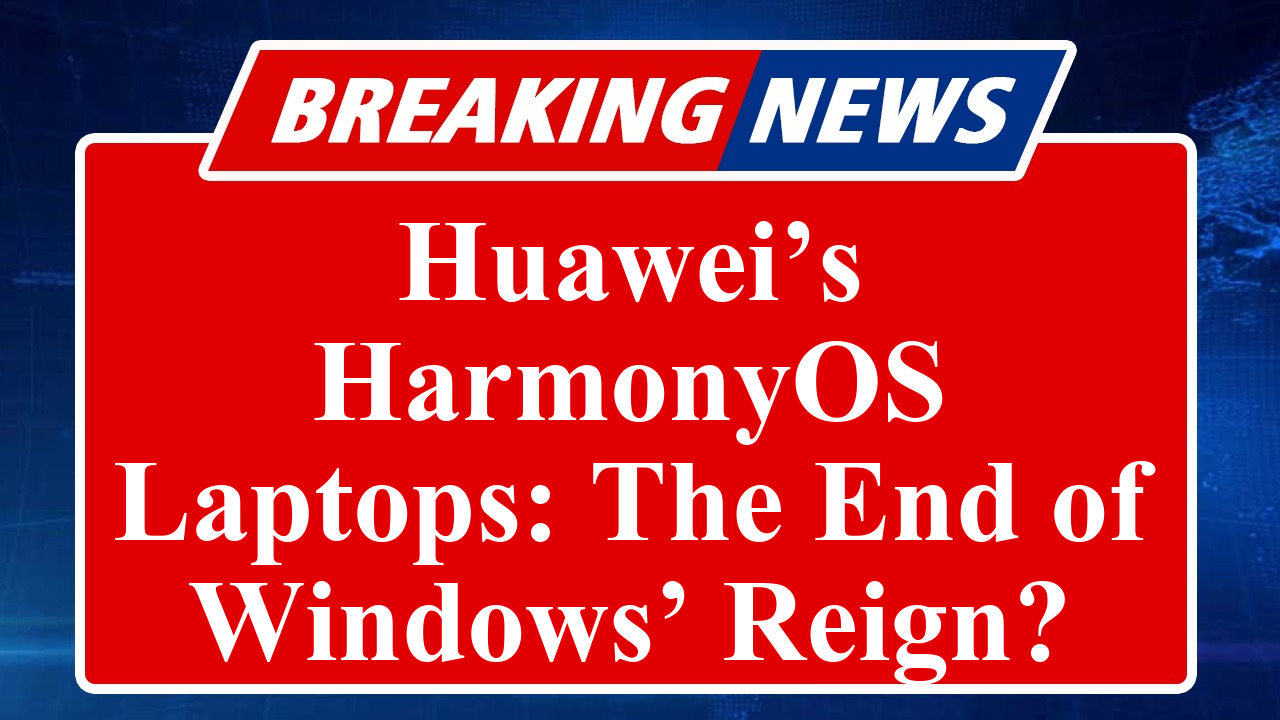“Huawei has launched its first HarmonyOS-powered laptops, the MateBook Pro and MateBook Fold, aiming to disrupt the Windows-dominated PC market. With the Kirin X90 chip and AI-driven features, these laptops promise faster performance and seamless cross-device integration. Facing US sanctions, Huawei’s push for tech self-reliance signals a bold challenge to Western tech giants in China and beyond.”
Huawei Unveils HarmonyOS Laptops to Rival Windows
Huawei has made a significant leap into the personal computer market with the launch of its first HarmonyOS-powered laptops, the MateBook Pro and MateBook Fold Ultimate Design, on May 19, 2025, in Chengdu, China. This move marks a strategic pivot for the Chinese tech giant, which is positioning itself as a direct competitor to Microsoft’s Windows and Apple’s macOS, particularly in the Chinese market, where Windows holds an 80.18% share as of early 2025.
The MateBook Pro, a sleek laptop resembling the 2024 MateBook X Pro, and the foldable MateBook Fold Ultimate Design are powered by Huawei’s self-developed Kirin X90 CPU, a 10-core ARM-based processor. These devices run on HarmonyOS 5, a desktop operating system that Huawei claims offers faster boot times, enhanced graphics via its Ark Engine, and deep AI integration with features like the Celia AI assistant. Celia can perform tasks such as summarizing meeting minutes or retrieving data from local documents, catering to both individual users and enterprises.
Huawei’s push for HarmonyOS on PCs stems from necessity and ambition. US sanctions, which restricted Huawei’s access to Microsoft’s Windows after its license expired in March 2025, forced the company to accelerate its development of a homegrown operating system. HarmonyOS, initially launched for smartphones in 2020, has evolved from an Android-based platform to a fully independent OS with its own kernel and user interface. The desktop version features a macOS-like centered dock bar, dynamic lighting effects, and support for multitasking with resizable windows. It also ensures compatibility with over 1,000 external devices, including 800 standard peripherals and 200 additional categories like printers and scanners.
The company’s ecosystem strategy is central to its challenge against Western tech giants. HarmonyOS 5 enables seamless integration with Huawei smartphones and tablets, allowing users to perform tasks like writing messages on a laptop using a smartphone keyboard or transferring files across devices. Huawei claims over 7.2 million developers are building apps for HarmonyOS, with more than 2,000 ecosystem apps expected by the end of 2025. However, the OS does not support sideloading applications, requiring users to rely on Huawei’s App Gallery, a move aimed at ensuring ecosystem control but potentially limiting flexibility for power users.
Huawei’s ambitions face significant hurdles. While the company dominates China’s smartphone market with a 17% share, its global PC market presence remains minimal. The “ecosystem challenge” persists, as Huawei needs developers to optimize applications for HarmonyOS to compete with the vast software libraries of Windows and macOS. Additionally, the Kirin X90, built on a 7nm process by SMIC, lags behind cutting-edge chips like TSMC’s 2nm processors, potentially impacting performance in high-end applications.
Despite these challenges, Huawei’s launch is seen as a “watershed moment” for China’s tech self-reliance. Posts on X reflect enthusiasm among some users, with sentiments like “Goodbye Microsoft” and praise for the laptops’ performance at competitive prices. However, skepticism remains, particularly regarding HarmonyOS’s limited device support compared to Linux, which supports over 40,000 devices. The OS’s closed-source nature also means it is unlikely to be adopted on non-Huawei hardware, restricting its global reach.
Huawei’s HarmonyOS laptops are a bold step toward reducing reliance on Western technology, driven by geopolitical tensions and sanctions. The company is set to showcase further advancements at its Developer Conference (HDC 2025) from June 20 to 22, where it will unveil additional HarmonyOS-based PCs. While dethroning Windows, which still boasts 1.4 billion monthly active users, is a long-term goal, Huawei’s immediate target appears to be surpassing macOS’s 1.21% market share in China.
Disclaimer: This article is based on recent news reports, web sources, and posts on X. Information is subject to change as new developments emerge. Readers are advised to verify details through official Huawei announcements and other primary sources.

